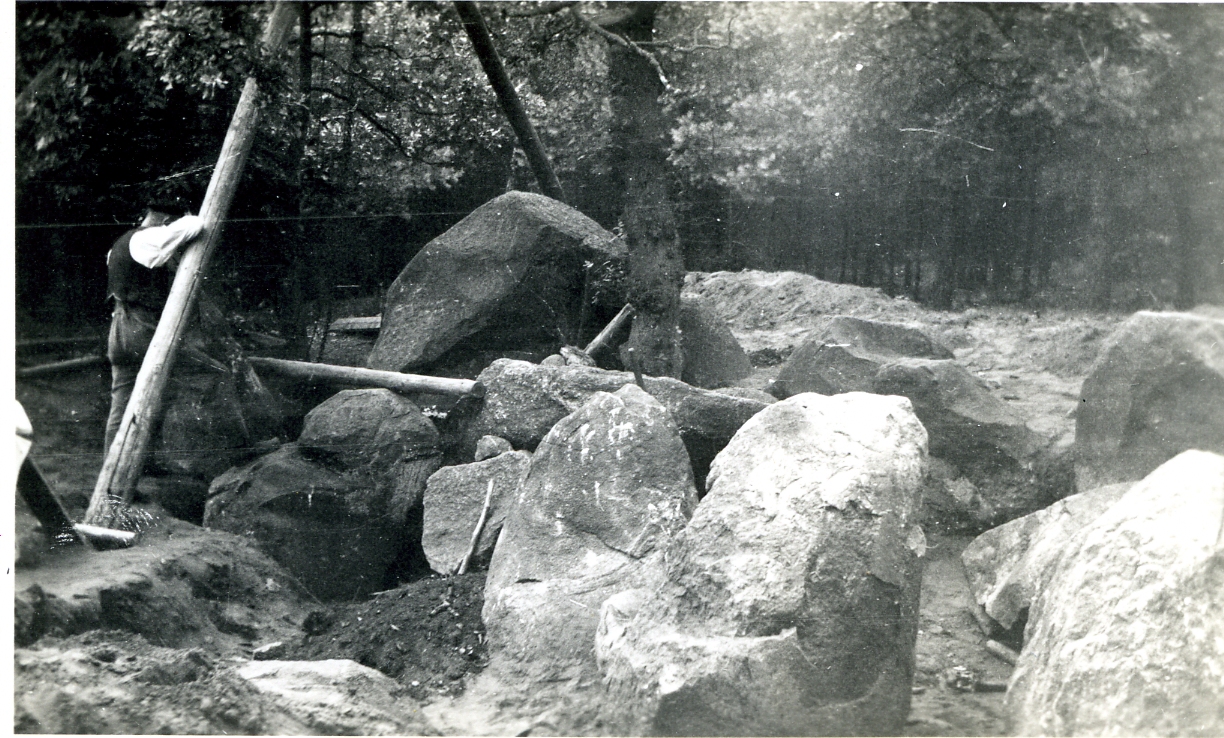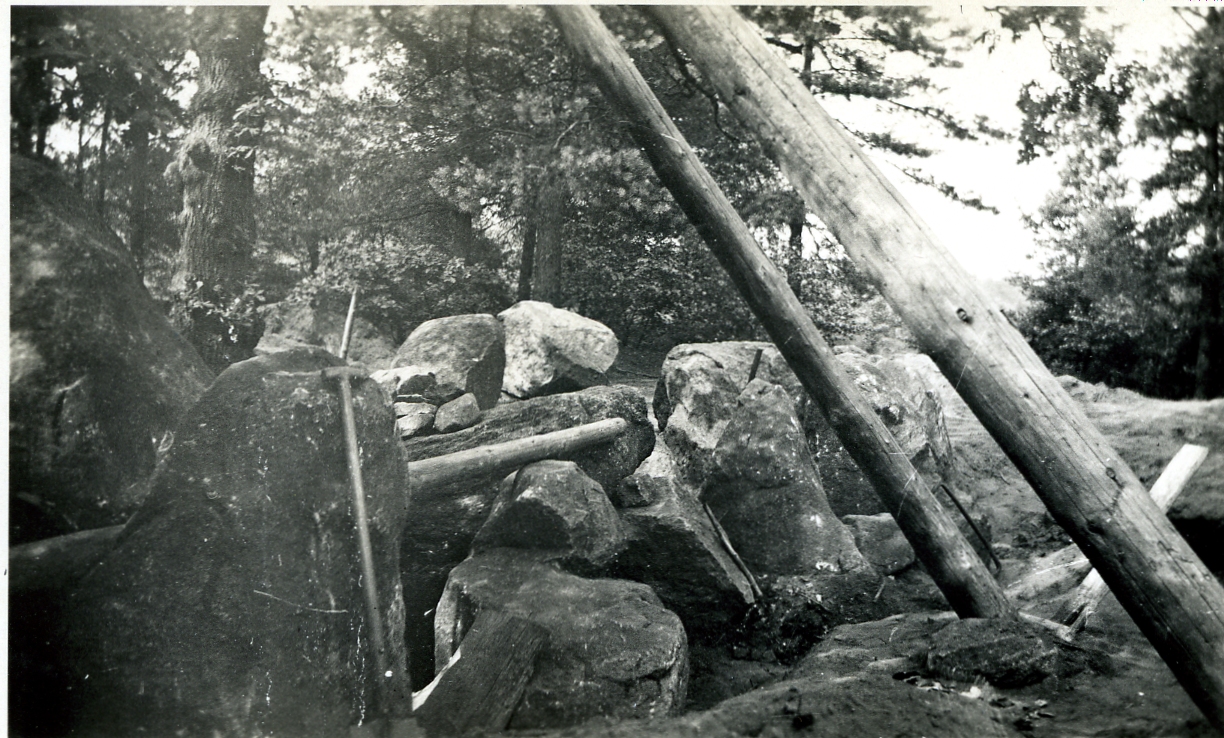
In 1932, the megalithic tomb was "restored" after archaeological excavation work. Through this reconstruction work, the megalithic tomb was restored according to the understanding at the time. While August Stieren sometimes reconstructed the megalithic tombs he excavated, it was most often to preserve the structures and provide educational monuments. With the existence of the letters about preserving the Düwelsteene, it also makes sense, that the reconstruction was done due to the wishes of the local heritage organisation of Heiden.
The relocation of original stones and such a massive intervention in the ground monument is no longer carried out today. The reconstruction of 1932 is problematic not only because of the change in the grave structure, but also because of the lack of documentation and measurement data of the megalithic grave before the reconstruction.
In Germany megalithic tombs also had been the focus of archaeological research at least since the early 19th century, as in the Netherlands, and their restorations were carried out mostly from the 1920s until the 1960s. Comparing the differing restorations of these megalithic structures in the different federal states of Germany shows that the restoration of megalithic tombs depends on who is in charge of the archaeological excavation and cultural heritage preservation at the time. While in Lower Saxony few megalithic tombs have been restored, even though a high number of such tombs are found in the state, the reverse can be seen in Mecklenburg-Western Pomerania, where Ewald Schuldt, director of the Museum for Pre- and Early History in Schwerin, excavated around 106 megalithic tombs from 1964 until 1970 and restored many of them (Schuldt 1972: 8). All of his excavations are documented in great detail, and the restorations were often focused on setting fallen megaliths upright again (Schuldt 1972: 246).

Restoration of the Düwelsteene, view towards the west (Image: LWL Altertumskommission für Westfalen)
In Westphalia August Stieren was in charge of the excavations and restorations of the megalithic graves in the region in the 1920s and 1930s as manager for cultural heritage preservation and thereafter president of the Altertumskommission for Westphalia from 1930 to 1969 (Sicherl & Trier 2006: 36). Possibly the earliest reconstruction of a megalithic tomb in Westphalia is the megalithic grave Lengerich-Wechte, which was reconstructed in 1928 by August Stieren.

Restoration of the Düwelsteene, view towards the east (Image: LWL Altertumskommission für Westfalen)
The megalithic tombs in Westphalia that were restored were sometimes excavated beforehand and then reconstructed in the 1920s and 1930s under the direction of August Stieren. These restorations were carried out as part of the preservation of these monuments, as many of them were found through agriculture or sand mining and had been partially destroyed (Stieren 1929: 30). The restorations of these megalithic tombs would not only preserve the tombs, but they would also provide educational material on the different types of graves that can be found in the region, e.g. passage graves and gallery graves.
- - - - - - - - - - - - - - - - - - - - - - - - - - - -
Sources and further reading: